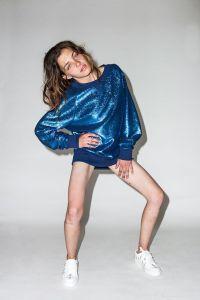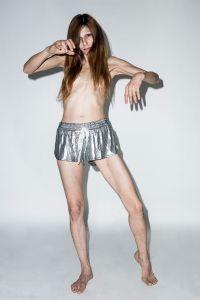Though I’ve been aware of Whoretography for some time, the release of her e-magazine inspired me to ask her to contribute a guest column and she graciously obliged me. I encourage you to explore her website, to buy a copy of her e-magazine and to help support the project via GoFundMe.
 I am addicted to photography; it’s a lifelong obsession of mine that began as a 2-year-old with the death of my father. When you lose a parent as a baby, the only connection you can form with that parent is through imagery. The last photograph before his death, the only one of us together, him proudly sitting on his 1970s motorbike. His death sparked my purpose in life. Now I am a documentary photographer, masters student, sex worker & activist interested in challenging the victim-centered nature of sex worker imagery on-line and how photography is instrumental the online sale of sex. I know my father would be proud of me.
I am addicted to photography; it’s a lifelong obsession of mine that began as a 2-year-old with the death of my father. When you lose a parent as a baby, the only connection you can form with that parent is through imagery. The last photograph before his death, the only one of us together, him proudly sitting on his 1970s motorbike. His death sparked my purpose in life. Now I am a documentary photographer, masters student, sex worker & activist interested in challenging the victim-centered nature of sex worker imagery on-line and how photography is instrumental the online sale of sex. I know my father would be proud of me.
I bought my first camera when I was 12 and I have never been without one since; even when I was homeless for 18 months, I refused to sell my last camera. My mother evidently thought photography was just a phase adolescent girls go through, because I was not permitted to study photography at secondary school; I went on to graduate with an undergraduate degree in Biochemistry and Genetics, Post Graduate in Criminology and a Graduate Diploma in Small Business Management. I put photography to one side in this period, prioritising an institutionally-defined career in criminal justice, and I moved countries; I sold and traded cameras to pay rent, tuition and one-way tickets to London and Paris. Finally, in April 2005, I followed my passion and become a full-time photographer; I also started as a sex worker the very same day. And because photography is so ingrained in my psyche, I eventually managed to make sex work about photography too. I simply refused to follow the photographic rules which dictated that in order to sell sex, I must photograph myself naked or semi-naked and bent over a table clutching my tits. So, to stand out from the blowjob crowd in an industry that demanded the use of photography, I said no to selfies and soft porn boudoir imagery and instead harnessed the power of pop culture and iconic imagery to sell the essence of the girlfriend experience. My reasoning was simple; I am not selling my body, so why do you need photographs of my body? This initial rebellion against sex industry photographic expectations kick-started my fascination with the role photography plays in the online transaction of sex.
 12 years later, I am now an award winning published photographer, a sex worker and a master’s student undertaking research in sex work activism through the Whoretography project. It’s difficult to pinpoint where exactly Whoretography began, but it was somewhere between realising I was in the business of a photographic conspiracy in which my camera was acting as an agent for the falsehood of couple cohesion and intimacy, and the idea of documenting paid-for sexual intimacy as the antidote to the visual falsehoods of wedding photography. Whoretography sits nicely at the intersection of images, technologies, society and the sex worker rights movement. It’s the first academic, ethnographic and creative platform dedicated solely to understanding the role photography plays in sex work via self-publishing as an artistic practice. The objectives frame a body of creative work that takes the form of a collection of soon to be published photo and artist books, zines and the recently launched Whoretography E – Magazine. My visual activism is about exploring a set of research questions through a mixed methodology approach designed to challenge the prevailing ideology of sex-work and to present to the viewer an alternative perception of the industry and its participants. I wish to stop the over-simplification of the lives of cis, trans and non-binary sex workers, and to challenge current imagery that encourages the sense that the only way of interpreting the lives of sex workers is to see them as ripe for “rescue”. This narrow and particular visual representation of male oppression reproduces a politics of pity that is embedded in the visual representation of sex workers; it suggests only pity makes sense as a political, social and cultural response.
12 years later, I am now an award winning published photographer, a sex worker and a master’s student undertaking research in sex work activism through the Whoretography project. It’s difficult to pinpoint where exactly Whoretography began, but it was somewhere between realising I was in the business of a photographic conspiracy in which my camera was acting as an agent for the falsehood of couple cohesion and intimacy, and the idea of documenting paid-for sexual intimacy as the antidote to the visual falsehoods of wedding photography. Whoretography sits nicely at the intersection of images, technologies, society and the sex worker rights movement. It’s the first academic, ethnographic and creative platform dedicated solely to understanding the role photography plays in sex work via self-publishing as an artistic practice. The objectives frame a body of creative work that takes the form of a collection of soon to be published photo and artist books, zines and the recently launched Whoretography E – Magazine. My visual activism is about exploring a set of research questions through a mixed methodology approach designed to challenge the prevailing ideology of sex-work and to present to the viewer an alternative perception of the industry and its participants. I wish to stop the over-simplification of the lives of cis, trans and non-binary sex workers, and to challenge current imagery that encourages the sense that the only way of interpreting the lives of sex workers is to see them as ripe for “rescue”. This narrow and particular visual representation of male oppression reproduces a politics of pity that is embedded in the visual representation of sex workers; it suggests only pity makes sense as a political, social and cultural response.
I work within the photographic genre of found imagery, with other peoples’ photographic material and written documents. The material for Whoretography is sourced using cyberethnographic methods; however, online interactions alone are insufficient to develop a deep understanding of the visuals of the sex worker online community. So I’ve conducted offline research consisting of qualitative interviews with internet based sex workers, and their customers in the United Kingdom, Australia and the United States of America. Found photography allows for an editorial style in which I can act as both as editor and author; this is not common when working with sex work imagery. Standard approaches to visually representing sex workers include photo-voice, wherein sex workers themselves create the photographs (typically of their workspaces), and photo-essay; the publishing world is awash with photo essays that, for example, take a sneaky look inside brothels. I wanted to avoid these visual clichés. Working with found images means constructing new narratives from seemingly unconnected photographs to provoke critical dialog about sex work and present an alternative view of sex work. It allows me to take the discussion of sex worker imagery from the realms of the sex work community and place it in the wider community. Fundamental to this goal is deconstructing the visual vocabulary of sex work imagery online to investigate the overarching questions, “Is it possible to reclaim the word ‘whore’ through creative practice as research?” and “What role does photography play in contemporary online sexual consumption?” I have an interest in ensuring photography is relevant in the fight for the full decriminalisation of sex work. We must celebrate the fact that sex workers are now image makers; we must challenge the exclusion of sex workers from online visual spaces; and we must talk about the posthumous humiliation of sex workers via the standard practice of releasing morgue photos. The prohibitionist war on sex work is underpinned by their belief that their photographic rhetoric is photographic truth, and we must name the game when it comes to the middle-class masses being in an uproar about the apparent gentrification of sex work via some mythical photoshop gentrification tool.
 I wonder if I have made this article sound too clinical and academic, but it has not been an easy two years. I have an overwhelming sadness for some of what I have seen; people’s understanding of sex work is based on a carefully constructed visual lie. The media are in cahoots with exclusionary bullies to peddle that lie, and it bloody royally pisses me off that middle-class feminists seek to deny sex workers access to the digital revolution and visual online spaces. I undertook a Master’s Degree because I was seeking a better theoretical understanding of my craft, and in stepping away from weddings I unwittingly stumbled across my life’s photographic purpose. I am committed to setting up a visual activist platform and sex work-positive publishing house. I have amassed over 20,000 images and a lot of what I have seen makes me cry. I have seen child abuse victims marketed as teen sex workers; prohibitionists create rescue images with a tonal quality reminiscent of colonial missionaries “saving the natives from themselves”; the publication and subsequent outing of sex workers by newspapers; the dire consequences of the pixilated face in propelling stigma; and the shaming of sex workers as a police tactic to help in the gentrification of up and coming hipster neighbourhoods. The way people have weaponised the camera as a tool of violence against sex workers is in marked contrast to the way we use the camera as an agent for couple cohesion in wedding photography. I am on a mission to shift the political landscape of sex work by forcing people to understand its visual landscape. Photography is currently used to silence the intentions, actions and feelings of sex workers and to make their lives more precarious; we need to change this, and I hope you will help me to make this happen.
I wonder if I have made this article sound too clinical and academic, but it has not been an easy two years. I have an overwhelming sadness for some of what I have seen; people’s understanding of sex work is based on a carefully constructed visual lie. The media are in cahoots with exclusionary bullies to peddle that lie, and it bloody royally pisses me off that middle-class feminists seek to deny sex workers access to the digital revolution and visual online spaces. I undertook a Master’s Degree because I was seeking a better theoretical understanding of my craft, and in stepping away from weddings I unwittingly stumbled across my life’s photographic purpose. I am committed to setting up a visual activist platform and sex work-positive publishing house. I have amassed over 20,000 images and a lot of what I have seen makes me cry. I have seen child abuse victims marketed as teen sex workers; prohibitionists create rescue images with a tonal quality reminiscent of colonial missionaries “saving the natives from themselves”; the publication and subsequent outing of sex workers by newspapers; the dire consequences of the pixilated face in propelling stigma; and the shaming of sex workers as a police tactic to help in the gentrification of up and coming hipster neighbourhoods. The way people have weaponised the camera as a tool of violence against sex workers is in marked contrast to the way we use the camera as an agent for couple cohesion in wedding photography. I am on a mission to shift the political landscape of sex work by forcing people to understand its visual landscape. Photography is currently used to silence the intentions, actions and feelings of sex workers and to make their lives more precarious; we need to change this, and I hope you will help me to make this happen.
